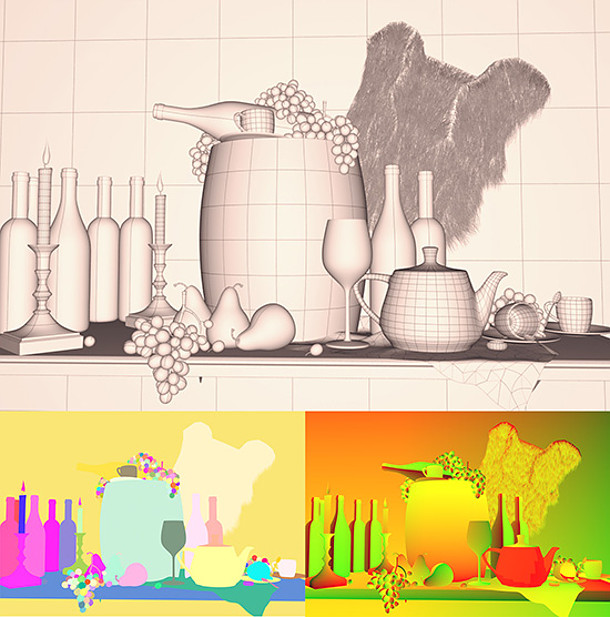Pixar ships RenderMan 20
Pixar has released RenderMan 20, the latest version of its production renderer, improving workflow in the new RIS rendering mode, including a new Denoise option and a new Visualizer view for debugging complex shots.
New Denoise post-process speeds up raytracing workflow
The headline addition is the new Denoise feature, jokingly dubbed the “‘make pretty’ button”, which automatically removes noise from raytraced images generated by RenderMan’s new RIS architecture.
The new workflow enables users to set a lower sampling value, resulting in a faster but noisier raw render – Pixar cites a speed boost of 2-10x – which Denoise then cleans up as a post-process.
Pixar says that denoising typically takes 2-4 minutes for a full HD frame, although the extra channels required increase the size of the raw render, so there is an attendant storage cost.
Denoising works on all object types, and can handle motion blur and depth of field. A cross-frame filtering mode, which takes account of pixels from neighbouring frames, improves performance on animations.
In addition, Pixar has introduced a new physical camera with a range of real-world options including tilt-shift focus, lens distortion, chromatic aberration, vignetting and shutter effects.

RenderMan 20’s new Visualizer integrator shows user a scene as RenderMan ‘sees’ the geometry in RIS mode, speeding up set-up and debugging of complex shots, and enabling fast interactive camera positioning.
Faster scene debugging with the new Visualizer view
Other key features of RenderMan 20 include Visualizer, a new integrator for viewing a scene as RenderMan ‘sees’ the geometry, showing wireframes, surface parameterisation and normals.
The option is intended to provide fast visual feedback when setting up or debugging complex scenes, enabling fast interactive camera positioning, although Pixar also describes it as “useful for turntables and portfolios”.
New RIS hair and light shaders, better support for volumes in RIS mode
There is also Marschner Hair, a new RIS BxDF shader developed for use on Pixar’s own animated features. It includes four specular components, including a “unique backscatter control” for more realistic results.
In addition, lighting workflows have been enhanced in RIS mode, with version 20 adding “streamlined” new RIS shaders, including a “user-friendly Daylight Shader”. There is also a new light filter API.
The performance of volumes has also been enhanced in RIS, including the ability to overlap volumes and nest volumes of varying properties, and adding support for Maya Fluids.
Other workflow improvements
Finally, there is an “intuitive holdout workflow” for capturing render elements like reflections and shadows for compositing into live-action footage, although Pixar’s site doesn’t go into much technical detail.
Pixar’s news release also notes that enhancements to image checkpointing allow “entire shots to be previewed nearly immediately and at full resolution”.
Pricing and availability
RenderMan 20 is available now for 64-bit Windows 7+, Mac OS X 10.7+ and Linux glibc 2.12+ and 4.4.5+. The renderer is compatible with Maya 2014 and above and Katana 2.0.
Individual floating licences of RenderMan cost $495, and the software is now free for non-commercial use.

